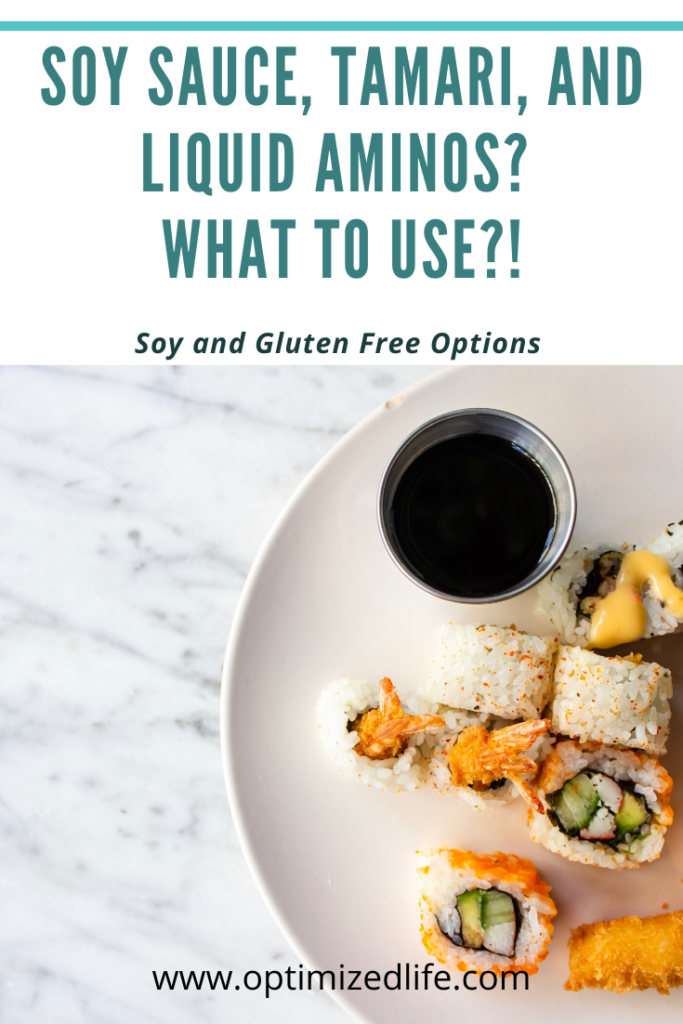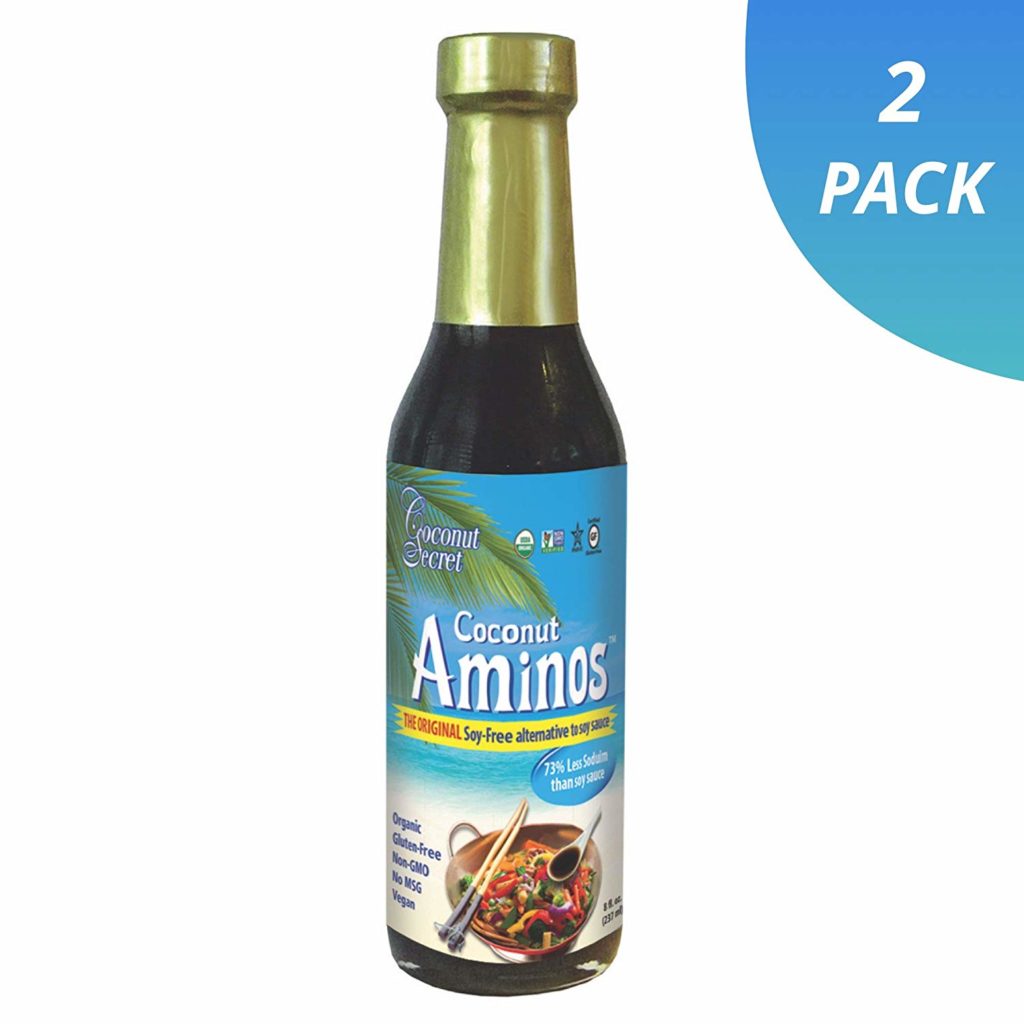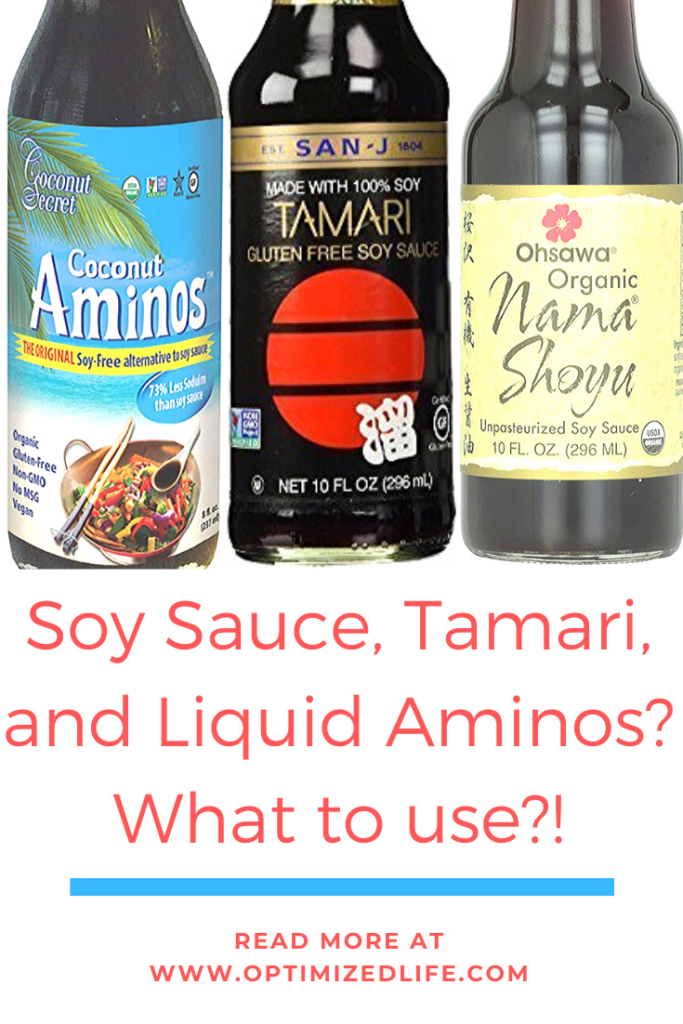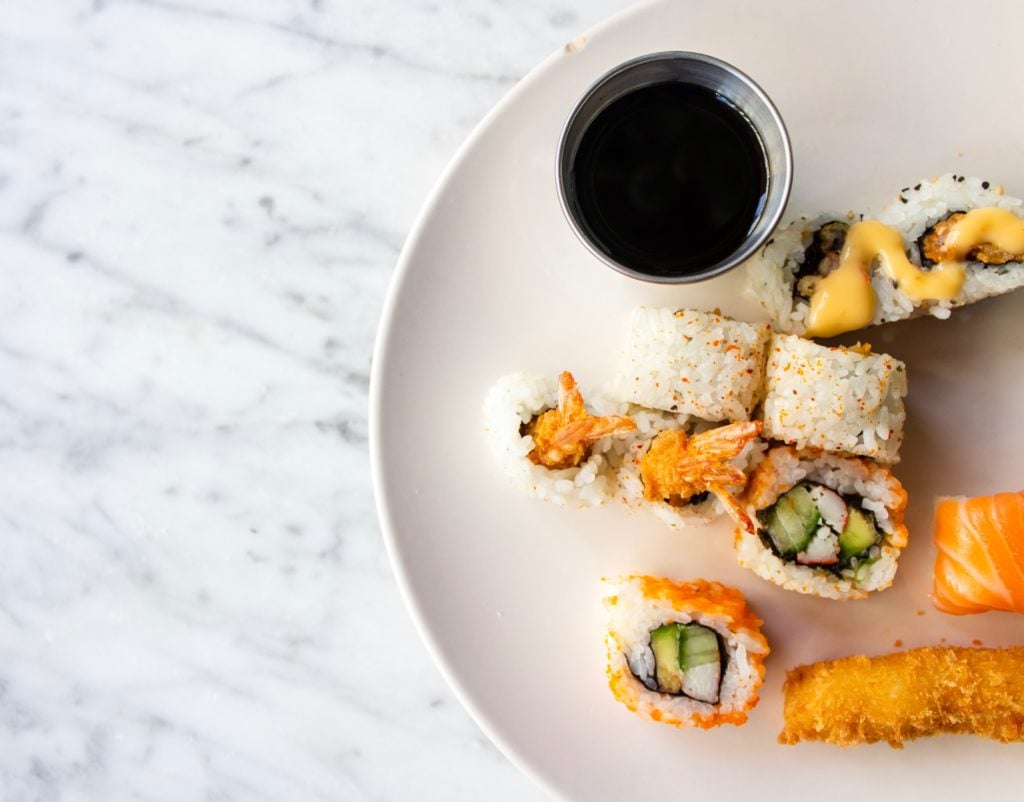Most Americans are introduced to soy sauce during their first Asian cuisine takeout experience. Whether the food is Chinese, Japanese, Vietnamese, etc., soy sauce can be considered one of the star flavors from most Asian cuisines. Similar to finding ketchup at every table in a diner, we find a bottle of this salty condiment offered at almost every table in Asian restaurants.

Back in the early rise of gluten-free diets (around 2009) people were becoming aware that gluten was found in more than just bread, crackers and cookies. It was hidden in our soy sauce too! Low sodium soy sauce just wasn’t going to cut it, people went looking for alternatives and this is where our tasty friend’s tamari steps in and liquid aminos appeared on the scene. These two sauces have gained popularity in kitchens across America in the last ten years and for good reason.
Let’s dive into the variation of these sauces and which one is right for you.
Starting with Soy Sauce (contains: soy + wheat)
Soy sauce is a condiment originated from Chinese culture. This dark liquid made from a fermented paste of soybeans. While soybeans are gluten-free most soy sauces contain wheat as the first ingredient. It’s also rare to find soy sauce that doesn’t contain MSG and GMO ingredients in the United States. But do remember that soy sauce is meant to be used in a very small quantity and if you don’t have celiac disease a little splash on your sushi shouldn’t cause you harm. However, it’s important to listen to your body and talk with a doctor if you feel soy sauce is causing you any symptoms.
Ohsawa Organic Soy Sauce

Tamari (Contains: Soy + No Wheat)
It is a sauce that originated from Japan and it looks and tastes just like soy sauce but most manufacturers create it without any wheat. If you’re celiac you should always read ingredient labels to confirm. Most tamari on the market will not have wheat as an additive. It’s still made from fermented soybeans and contains a hefty amount of sodium. I personally feel it has a strong umami flavor compared to traditional soy sauce but it’s something most people can’t tell the difference if you’re adding a little amount to a large dish.
San J Tamari

Coconut Aminos (contains: No soy + No wheat)
This is a gluten-free and soy-free option. Made with two simple ingredients, coconut blossom nectar, and salt. This is fermented coconut nectar creating a dark, slightly thicker sauce that resembles soy/tamari. Nutritionally speaking there is slightly more sugar in this option but 70% less sodium. Coconut aminos are one of my favorite additions to salads, roasted sweet potatoes, etc. This has sweet and subtle umami flavor making it my personal favorite.
Whether you like traditional soy sauce, tamari, or coconut aminos this is a great flavor to incorporate on roasted veggies, fresh salads, tossed in dressing, etc. All of these seasonings can be found in most big-boxed grocery stores as well online.
Coconut Secret Coconut Amino

Your Faithful Friend,
Charlotte Faith

Join me on: Facebook | Instagram | Pinterest | YouTube

Join the Optimized Life Community!
Here at Optimized Life, we want to create healthy families and encourage wellness communities. We are simply people who want to live our healthiest and best life possible. Join us!





![Optimized Coffee: [Healthy Coffee Recipe Packed with Vitamins & Protein]](https://www.optimizedlife.com/wp-content/webpc-passthru.php?src=https://www.optimizedlife.com/wp-content/uploads/2020/05/thumbnail_large-370x245.jpg&nocache=1)
16 Comments
This was so helpful, thank you! I’m looking for ways to cut gluten. I honestly had no idea about the aminos. Bought some for a vegan recipe (I think) and now I am thrilled it’s in my fridge. Very interested in trying Tamari.
NICE!! FYI Today is National Gluten-Free Day!
Thank you for this wonderful information.
this was an eye opener! We grab these things off the shelf but really, we don’t even pay attention to whats in them. I’m going to be on the look out for these soy sauces you mentioned, I just checked the bottle I have at home and you are right! Wheat was the among the first ingredients, I had no idea!
Thank you for sharing. This post is informative. I hadn’t thought of an alternative to soy sauce. It would be great for my stir fry recipes.
YUM! That would be a perfect idea!
What useful info! I only ever really knew about soy sauce. Thanks for sharing!
Thank you so much for commenting. Let me know if you try one of the other options.
I love all the options you gave! Great article.
Thank you for reading!!
I never knew the difference between the three of these! I use coconut aminos a lot because I like that it’s not as salty. I had no idea what it was or that it had 70% less sodium than soy and tamari! Great to know!
Awesome! It sounds like you are one step ahead!
This was very informative. I’ve started cooking more dishes with Asian flavors and this was a helpful guide!
Where was this when I went paleo years ago?! This is super helpful information and I will definitely be using coconut aminos in the future!
So detailed! Thank you so much
this is so helpful, i never understood the differences before — definitely good to know, especially if you’re gluten-free!